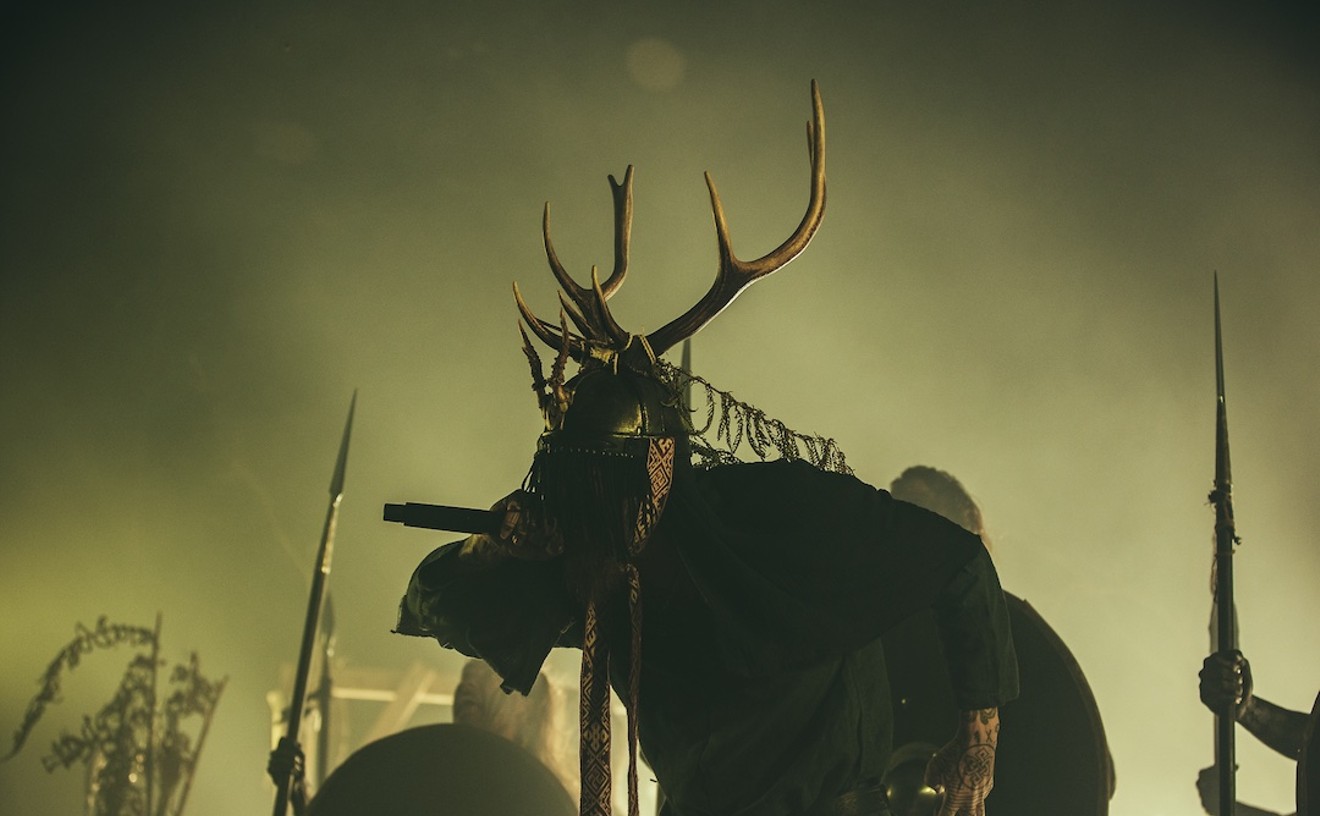Anytime a discussion of jazz saxophone takes place, a handful of names invariably crop up, even from those only vaguely familiar with the form. And there's a good reason for that: While there have been innumerable saxophonists over the last century or so, none have been as influential as these players, whose impact was so profound that their shadow still darkens the path of the countless young cats who have followed in their wake. Keep reading for a rundown of the ten best saxophonists in jazz.
See also: Ten essential jazz albums for those who know squat about jazz
10. ORNETTE COLEMAN With his 1959 Atlantic debut, The Shape of Jazz to Come, alto player Ornette Coleman helped usher in free jazz and avant-garde jazz. Recording without piano helped liberate the songs of a recognizable chord structure and his harmolodics philosophy sought to to free musical compositions from any tonal center. Coleman also used somewhat inventive instrumentation, such as the double quartet (one quartet on each side of the stereo channel), on albums like Free Jazz. The 2006 live album Sound Grammar is among the 83-year-old saxophonist's better recent efforts.
9. RAHSAAN ROLAND KIRK Some folks thought Rahsaan Roland Kirk's playing multiple horns at once was a gimmick. Granted, the guy looked like a madman with all sorts of woodwinds strapped around him, with maybe a tenor sax or manzello and stritch (both obscure saxophones) in his mouth at the same time, but Kirk was a hell of an improviser, often harmonizing with himself. There's a live recording of Kirk playing "Sentimental Journey" on one horn and Dvorak's "New World Symphony" on the other, and Kirk said it's splitting the mind into two parts. "It's like making one part of your mind say, 'Ob-la-di' and make the other part of your mind say 'What does it mean'?" Not only was Kirk a damn fine saxophonist but his flute playing, while scatting, heavily influenced Ian Anderson of Jethro Tull.
8. STAN GETZ While Lester Young might have had a warm tone, Stan Getz's was even more relaxed and wispy, especially on the jazz-bossa nova albums he did with Brazilian pianist Antonio Carlos Jobim and singer and guitarist Joao Gilberto, including the 1963 album Getz/Gilberto, which included "The Girl From Ipanema." Sure, Getz's tone was perfectly suited for bossa nova, but the tenor player could also work his around bop tunes. His playing is especially gorgeous and fluid on Focus, which included string arrangements by arranger Eddie Sauter.
7. CANNONBALL ADDERLEY Julian Adderley's nickname "Cannonball" was derived from "cannibal," which he was dubbed in high school because of his large appetite. But the alto player also had a voracious hunger for music, which showed in his inventive improvisations, especially on Miles Davis's watershed album Kind of Blue and Adderley's remarkable Blue Note release Somethin' Else. His 1961 album You Know What I Mean? with Bill Evans and live albums like Mercy, Mercy, Mercy are also commendable.
6. JOE HENDERSON On his incredibly strong 1963 debut, Page One, released in his mid-twenties, tenor player Joe Henderson proved that he was a major jazz contender with rich and robust tone. Since then, Henderson went on to release some outstanding albums for Blue Note, including Inner Urge and Mode for Joe, and milestone albums like The Kicker. His '90s output on Verve is worth checking out, as well, especially So Near, So Far (Musings for Miles) and Lush Life: The Music of Billy Strayhorn.
5. LESTER YOUNG While saxophonists of the '30s and '40s opted for more of biting, edgier tone, tenor player Lester Young opted for a warmer, more relaxed tone. But while his tone might have been laid-back, he was clearly a hell of an improviser, as evidenced by a lot of his recordings with Count Basie, as well as the small-group recordings with Teddy Wilson, Harry "Sweets" Edison or Billie Holiday, who gave Young his nickname "President" (or "Pres" for short). One of the saxophonist's best albums of the '50s was The President Plays With the Oscar Peterson Trio.
4. WAYNE SHORTER Wayne Shorter, who turns eighty this month, and Sonny Rollins are two of the finest saxophonists living today. After Shorter got an early start with Art Blakey's Jazz Messengers in the 1950s, he released some brilliant Blue Note discs, like Night Dreamer, Speak No Evil and Adam's Apple, which includes his most famous composition "Footprints" that he would later record and perform with Miles Davis's Second Great Quintet in the '60s. In 1971, Shorter formed the fusion group Weather Report with keyboardist Joe Zawinul and throughout group's fourteen-year history, the outfit included some outstanding players like the great bassist Jaco Pastorius. Shorter's Without a Net, released this year on Blue Note, proves he shows no signs of slowing down.
3. SONNY ROLLINS With his instantly recognizable biting and clear tone, tenor player Sonny Rollins, who turns 83 in September, is regarded by some as the greatest living saxophonist today. Inspired by Lester Young and Coleman Hawkins, Rollins had an ability to rarely repeat himself when improvising, even during lengthy solos. He was just in his mid-twenties when Saxophone Colossus was released, and the title of the disc was more than fitting. Rollins was already a titan of the tenor evidenced by cuts like "St. Thomas," one of his most well known compositions. His piano-less trio discs, like Way Out West and A Night at the Village Vanguard are epic, as is The Bridge with guitarist Jim Hall, and his more recent recordings are stellar, as well.
2. CHARLIE PARKER One of the major progenitors of bebop, Charlie "Bird" Parker is hailed by some as the best jazz saxophonist ever, and with good reason. An astonishing improviser, Bird could effortlessly weave his way through complex changes at breakneck speeds like on "Kim," or he could lay back somewhat and play gorgeously on ballads like "Lover Man," which Charles Mingus considered to be among one of Parker's greatest recordings, or the mid-tempo "Just Friends" from his exceptional Charlie Parker With Strings album. Parker was a master of the highest order.
1. JOHN COLTRANE A titanic force behind tenor and soprano saxophones during his four decades on this planet, John Coltrane was relentless in his pursuit as musician. Constantly crafting his technique, he supposedly practiced sometimes ten to twelve hours a day, including after gigs or between sets. While there's some great material on his early Prestige recordings, his watershed album Giant Steps for Atlantic was monumental. His Impulse! records with his classic quartet of McCoy Tyner, Jimmy Garrison and Elvin Jones are some of finest discs he released, including A Love Supreme and Crescent. Coltrane influenced countless musicians and his presence is even heard in younger players today.
Follow @Westword_Music











